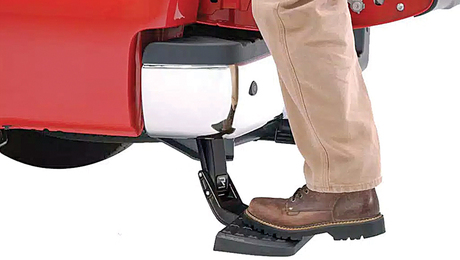Every one can paint but can you create clean cut lines? Clean cut lines are made with tape or a steady hand and is the mark of any professional job. For interior painting tape all your baseboards after all drywall repairs have been made and be sure to wipe down all baseboards with a damp rag to ensure good adhesion from the blue tape. Only apply pressure on the to the top edge of the baseboard with the tape this will act as drip catcher when you start rolling. Use one long piece of tape for each section of the base board if their is wave in the tape that exposes the base board correct it and keep moving. Come back and patch the wave with another piece. Use scissors for the corners and make sure the corner tape is at least 2 ” anything smaller and you risk touchups on a otherwise clean baseboard. Hopefully you were able to finish the job in at least 2 days if not make sure you buy the more expensive tape that will adhere for up to 14 days but be careful the sooner the tape is removed the better. When removing tape especially when the paint contains any gloss you have to be very careful not to rip a jagged cut line. Start at a corner and pull the tape at 45 degree angle away from the baseboard(move slow but steady when dealing with any and all glossy paint. Thats it your done!
I have heard many tips for cutting in but my favorite comes from an experienced old timer who has 20 plus years experience in painting. “Just push the paint where you want it to go.” Sounds simple enough right, well I have longer tip based on that same advice I received years ago. First thing first buy a quality brush. For drywall I prefer a 2 1/2″ sher tip, cost is about $15. Fill your cut bucket with latex paint based on your experience less for beginners more for the seasoned pro. I don’t recommend using paint cans because of the lip around the edges this will create a huge mess and slow you down if you are a beginner. Keep your brush clean and it will perform better by that I mean don’t dip to deep into the paint half of the brushes length is adequate anymore than half and you might have to clean out your brush half way through the work day. After you dip your brush tap your brush on either side of the cut bucket to prevent drips. Use the same sides of the bucket to tap your brush this will give you a clean place to rest your brush when you need a break. Do not wipe of the brush with the edge of the cut bucket this will leave you with a dry brush. Finally you are ready to cut in so take your double tapped brush and smear the excess paint from the brush about 1/2″ away from you target straight edge. A small bead will appear that is what you are going to push into a straight line. Stay patient and practice keeping a steady hand. Turn the brush so that the 21/2″ width is facing the straight edge or if your experienced you can use the fat end of the brush all the way across. For corners turn your brush vertically and use very little paint remember push the paint where you want it to go. When cleaning your brush start with hot water end with cold this will contratract the brush into its orginal form, kick out your brush stick your boot at a 45 and knock the brush off 3 times on either side. Don’t forget to put your brush back in the chuck after cleaning to keep its form. Make sure you apply the paint in long even strokes no matter what kind of paint it is. Good luck and be patient their is no substitute for experience.
The same applies to oil base paints but you must have experience so keep practicing with latex before you move up with the big boys. Keep a good consistency with paint thinner, just a splash for beginners and a double splash for pros. The consistency is important and hard to describe but you should have great flow when applying it but if their is too much thinner you will be cleaning up drips and your coat will be too thin for a finished coat. You will need to add more thinner as the day goes on constantly stir your paint through out the work day. Do not go back and make touch ups on wet oil base paint you will create a even bigger touch up just let it dry and sand the dry touch up areas and then paint. Be careful oil based paint will ruin carpet, concrete, and create head aches and hand blisters with hard surfaces. Keep thinner close by with a clean rag(wear gloves you don’t need to prove your a tuff guy). The same rules apply with oil base paint and cutting in but slow it down, oil base paint tends to drip so give it a close visual inspection for drips before continuing. Remember long even strokes is the key and their is a time limit for every area before it begins to dry so keep it moving but slow it down(if that makes sense!). Good luck and where a mask in poorly ventilated areas the fumes are not good for your health at all.
What about stain? I don’t use a brush with small stain projects I perfer a lent free clean cotton rag. This in my opinion creats the best finish because there is little to no blothching or brush marks when you use a rag. The disadvantage is that it is messy but with gloves and experience it is easier and faster than a brush. Put the stain on very thin with the rag if you put it on too thick it will leave a blotchy finish. Although I do use a brush for large decks with a rolling pole attachment this pentrates the stain deep into the wood much better than a roller. You can find this brush at your local sherwin williams for about $25 to $35. Don’t shake stain cans it traps air bubbles in the stain that can ruin the finish stir stain with a stir stick.
Edited 10/2/2006 12:02 am ET by Glen91482
Edited 10/2/2006 12:31 am ET by Glen91482
Edited 10/2/2006 12:32 am ET by Glen91482
Edited 10/2/2006 12:55 am ET by Glen91482















Replies
Welcome to Breaktime, aka BT, Glen.
Starting off by giving good info is a great way to get into everyone's good book...
Keep reading and posting - we are all here to share our knowledge (and our beefs) - so please give us some more personal information:
near the top, by the banner, is "update profile". Click on it, and follow the questions. In future it'll help us with regional Qs, for instance.
I do a lot of painting and that was a well-written informative post. I really liked your description of how to cut a straight line.
There's a couple of things I do different:
I don't tape baseboard. I paint the baseboard first, then I cut in the wall making a straight line at the trim. When I roller, I don't tape the baseboard. Instead, if the trim/wall colors are close, I roller carefully to minimize splatter and usually that's good enough. If any noticeable splatter gets on the baseboard, I go back and touch it up. I can touch-up baseboard around the room about as fast as I can apply tape.
As for storing brushes, I don't put them back in their original case (it would never last as long as the brush anyway). Instead, I hang them up to dry while they're still wet. This helps them to keep their shape just as well as putting them back in their case and it's easier.
-Don
I read one time in a book on housepainting written by a contractor that the best way to do a color joint was, rather than taping, to scribe a line use a straightedge and a utility knife, and then to flow the paint to right to the scribed edge, where it would stop.
I tried that but could never make it work.
Great information.
Any advice on cleaning oil based paint from brushes. I can never get a usable brush after I clean one, well try to clean one anyway.
Welcome to BT.
I'm just a DIY'er but I've cleaned many a paint brush. Up til 'bout a year ago, I usually failed miserably "cleaning" oil based paint from brushes.
However, about a year ago I read somewhere (here, perhaps?) that you should hang thebrush in paint thinner, then rinse best you can in fresh(er) cleaner and then wash the brush in water using liquid detergent.
It sounds counterintuitive but I works!!! I have'nt lost / destroyed a brush since I started using this method, even with oil based urethane.
Haven't had to buy any new brushes since. Try it!
Will do.
Thanks
TFB (Bill)
Oil based brush cleaning
In the old days when diesel was 12 cents a gallon would clean in diesel and store in diesel, then sping/shake out before use.
Lately, with thinner over $3-4 a gallon at best, have turned to using cheap chip brushes (10 to 30 cents apiece at HD for 3" brushes) and just throwing themaway after use. Only thing with the cheap brushes you need to brush them with a wire brush first to get rid of loose strands.
You can salvage a brush that even had oil dry on it. It takes soaking in MEK for a couple of hours, but the oil will dissolve enough to be worked out with a brush comb. Then paint thinner to remove any remaining residue. If I've put something that harsh on a brush, I usually slather it with goop for awhile and just let it sit. I don't actually know if this does a thing. Its superstition if its anything. Kind of reminds me of putting conditioner in your hair. Then I wash with dish detergent. It works, so I havent changed it.
And removing tape clean - easy. Thats what snap knives are for. Score a line at the joint, then pull your tape. If you dont tell it where to break, you'll pull it off the wall. Real trucks dont have sparkplugs
I have had good results with just one washing in MS. Then shaking off the excess and working in waterless handcleaner (GOJO, etc) and after working that through rise out in water.
GOJO? Really? I'll give it a shot next time I foolishly agree to include painting in my bid.
TFB (Bill)
Actually I have not used that brand. Don't know the brand off hand. But I think that it is all similar.Just make sure that you don't get the stuff with punice in it. It is clear on the label when it has it.
Thanks.TFB (Bill)
Buy a brush spinner.Cost about $15 at a paint shop, they may even sell them at HD.Takes me about 30 seconds to spin the brush 3 or 4 times. Gets it clener faster than I ever could before. Also with oils before dipping the brush in the paint I load it with spirits all the way up into the ferrule. Then give it a light spin. Getting some thinner up in the brush at the start seems to make it easier to get the brush clean later on.Mongo
"Also with oils before dipping the brush in the paint I load it with spirits all the way up into the ferrule. Then give it a light spin."
Could or should you do that with water and latex paints?
TFB (Bill)
You certainly can.With both solvents, make sure you give it a good spin, or you can have a bit of a leaky brush when you first start painting.
It is actually a good idea with all brushes, rollers, etc to soak with the appropriate thinner before using. It keeps the tools from drawing all the solvent out of the paint the first time you dip it in.I do not mean dripping wet when you put it in the paint, but squeeze out the excess first.
What I would add, particularly in old houses where the trim is not painted, is that the "line" is whatever looks best, not necessarily where the trim starts. Which means it takes two to do the job. One painting and one eyeballing from different angles to see where the line needs to go.
What I do is caulk with woodtone caulk, then work my line to what looks best.